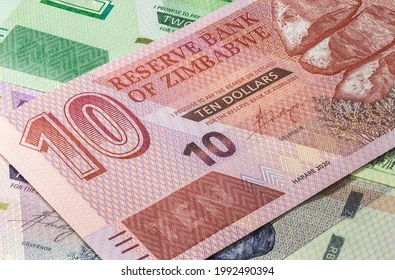
Batanai Matsika IT IS often said that government authorities, particularly those tasked with the monetary and fiscal policies, plan decades ahead, carefully playing the long game, evaluating different scenarios, and mapping out strategic plans.
But in Zimbabwe right now there is not much sign of strategic genius.
Even as the country drifts into electioneering mode, the only stable thing on the monetary front is the instability and inconsistent communications on the path to be taken by government.
Yes, Twitter noisemakers and some economic commentators have added to the chaos, leading to waning confidence in the Zimbabwean dollar (Zimdollar).
More recently, Zimbabwe National Statistics Agency (Zimstats) published its April 2022 inflation figures.
The month-on-month inflation rate was 15.,% versus 6,3% in March 2022. The year-on-year inflation rate stood at 96,4%.
Guessing where tomorrow’s exchange rate may lie is not an easy task.
But business investors seeking to avoid blow-ups should pay special attention to policy moves that could impact on financial markets and business operations.
- Chamisa under fire over US$120K donation
- Mavhunga puts DeMbare into Chibuku quarterfinals
- Pension funds bet on Cabora Bassa oilfields
- Councils defy govt fire tender directive
Keep Reading
In this article, Piggy considers a scenario whereby the exchange rate continues to depreciate by an average of 16% per month over the next eight months to December 2022.
Under this scenario, the exchange rate depreciates to ZW$850/USD while the inflation rate moves to 338,5% by December 2022.
Piggy notes that there is indeed scope for unplanned government expenditures, particularly as we move towards an election year in 2023.
Political interests will always take centre stage, and this could lead to budget overruns.
That said, the issue at hand is that the exchange rate in Zimbabwe has gone haywire and prices are skyrocketing.
These inflationary pressures have led to deteriorating confidence in the local currency (ZWL).
This is evidenced by the stampede for foreign currency from every corner of the Zimbabwe economy given the need to preserve value.
Foreign currency (particularly US dollars) is still considered a better store of value.
Meanwhile, the gap between the official rate and parallel market continues and the net-effect has been distortions that have presented arbitrage in the broader economy.
The big question in Piggy’s mind is: What could be the next move by monetary authorities in Zimbabwe given the price level developments?
Overall, it appears that there are very limited options for monetary authorities to pursue at this point in time.
An important fact is that the Zimbabwean economy is now largely informal and it is very difficult for monetary authorities to police the exchange rate through statutory instruments.
That said, Piggy envisages some form of “fire-fighting” measures, which could even be extended to the stock exchange.
- A market halt or review of circuit breakers to curb gains should not be completely dismissed. Now, here is a piece of advice that you will not find on your regular stockbroker newsletters and bulletins; Stick to the Blue Chips for now! It is easier to exit from blue chips when the house of cards finally collapses. Get more tidbits on the stock market by joining a PiggyBankAdvisor WhatsApp Group (+263 78 358 4745).
- Matsika is the head of research at Morgan & Co, and founder of piggybankadvisor.com. — [email protected]/ [email protected] or +263 783 584 745.











